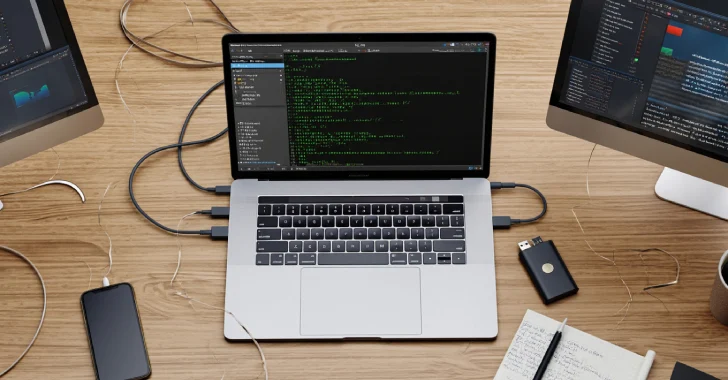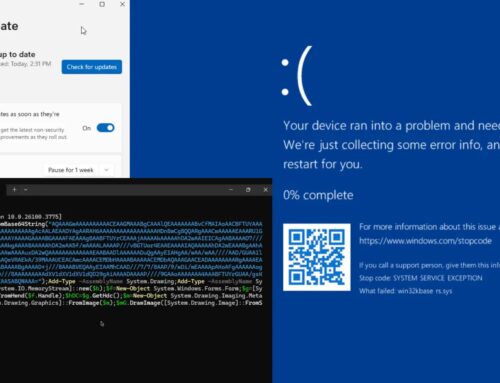
Apple Patches Safari Vulnerability Also Exploited as Zero-Day in Google Chrome
Unpacking the Latest Apple Security Patches: A Critical Safari Vulnerability and Zero-Day Exploitation
A recent wave of security updates from Apple has once again underscored the relentless cat-and-mouse game between cybersecurity defenders and malicious actors. Leading the charge is a critical fix for Safari, addressing a vulnerability that, disturbingly, was already being exploited as a zero-day in Google Chrome. For IT professionals, security analysts, and developers, understanding the intricacies of this flaw and its implications is paramount.
The Core Vulnerability: CVE-2025-6558 Explained
At the heart of Apple’s latest patch is CVE-2025-6558, a vulnerability with a significant CVSS score of 8.8. This high-severity flaw stems from an incorrect validation of untrusted input. Specifically, the issue resides within the browser’s ANGLE and GPU components. When exploited, this misvalidation can lead to a sandbox escape.
- Incorrect Input Validation: This refers to a common class of vulnerabilities where software fails to properly check, filter, or sanitize user-supplied data before processing it. Malicious input can then be used to trigger unexpected behavior.
- ANGLE and GPU Components: ANGLE (A_N_G_L_E: Almost Native Graphics Layer Engine) is an open-source standard graphics API implementation that allows web applications to use high-performance graphics. The GPU (Graphics Processing Unit) is the dedicated hardware responsible for rendering graphics. Exploiting flaws in these components can give an attacker deeper access to a system’s resources.
- Sandbox Escape: Modern web browsers employ sandboxing to isolate web content from the underlying operating system, limiting the damage an attacker can inflict even if they compromise a web page. A sandbox escape means an attacker has found a way to break out of this confined environment, potentially gaining broader access to the user’s system, data, or launching further attacks.
Zero-Day Exploitation: A Disturbing Precedent Set by Chrome
What makes CVE-2025-6558 particularly concerning is its prior exploitation as a zero-day vulnerability in Google Chrome earlier this month. Google’s announcement of this active exploitation heightened the urgency for Apple to issue its own patches across its entire software portfolio.
A “zero-day” vulnerability refers to a flaw that is unknown to the software vendor (or for which a patch is not yet publicly available) but is already being actively exploited by attackers in the wild. This situation leaves users highly vulnerable until a fix is deployed, highlighting the importance of rapid response and patching cycles from vendors.
Impact and Potential Consequences
A successful sandbox escape fueled by incorrect input validation in a browser’s graphics components can have severe consequences:
- Data Theft: Attackers could potentially access sensitive user data stored on the system.
- Malware Installation: The ability to escape the sandbox might allow attackers to download and execute arbitrary malicious code.
- System Compromise: In the worst-case scenario, full system compromise leading to persistent access for further malicious activities.
- Espionage: Targeted exploitation could facilitate surveillance or data exfiltration.
The fact that this vulnerability manifested across different browser engines (WebKit in Safari and Chromium in Chrome, albeit via shared components like ANGLE) underscores the importance of thorough security auditing across common underlying libraries and frameworks.
Remediation Actions: Securing Your Apple Ecosystem
For organizations and individual users running Apple devices, immediate action is crucial to mitigate the risks posed by CVE-2025-6558 and other recently patched vulnerabilities.
- Update All Apple Software Immediately: Apply all available security updates across your entire Apple ecosystem. This includes macOS, iOS, iPadOS, watchOS, tvOS, and Safari. Regularly check for pending updates in System Settings/System Preferences.
- Enable Automatic Updates: Configure your Apple devices to automatically download and install security updates whenever possible. While this offers convenience, always be aware of potential compatibility issues in enterprise environments and consider phased rollouts.
- User Education: Remind users about the dangers of clicking suspicious links, visiting unknown websites, or downloading untrusted files. Browser-based vulnerabilities often rely on social engineering to trick users into visiting malicious sites.
- Strong Endpoint Protection: Maintain robust endpoint detection and response (EDR) solutions and antivirus software on all devices to detect and block malicious activity, even if a vulnerability is exploited.
- Regular Backups: Implement a strategy for regular, secure backups of critical data. This minimizes the impact of potential data loss due to a successful cyberattack.
Tools for Detection and Mitigation
While direct detection of a specific zero-day exploit might be challenging without vendor patches, a layered security approach using various tools can significantly enhance an organization’s defense posture.
| Tool Name | Purpose | Link |
|---|---|---|
| Apple Software Update | Core mechanism for applying Apple’s patches. | Built-in to macOS/iOS/iPadOS |
| Endpoint Detection & Response (EDR) Solutions | Detects and responds to suspicious activities on endpoints, including post-exploitation behaviors. | (Varies by vendor, e.g., CrowdStrike, SentinelOne, Microsoft Defender for Endpoint) |
| Network Intrusion Detection/Prevention Systems (NIDS/NIPS) | Monitors network traffic for signs of attacks, including C2 communications post-exploitation. | (Varies by vendor, e.g., Snort, Suricata, commercial firewalls) |
| Vulnerability Scanners (e.g., Nessus, OpenVAS) | Identifies unpatched software and misconfigurations across systems. | Nessus / OpenVAS |
| Secure Web Gateway (SWG) | Filters malicious websites and content, preventing access to exploit kits. | (Varies by vendor, e.g., Zscaler, Forcepoint) |
Key Takeaways for a Resilient Security Posture
The disclosure and subsequent patching of CVE-2025-6558 serve as a potent reminder for proactive cybersecurity. browser vulnerabilities, especially those exploited as zero-days, represent a significant avenue for initial access for threat actors. Prioritizing timely patching, maintaining vigilance over the latest threat intelligence, and implementing a multi-layered defense strategy are not just best practices; they are foundational for an organization’s digital resilience.
Stay informed, stay patched, and reinforce your defenses.





